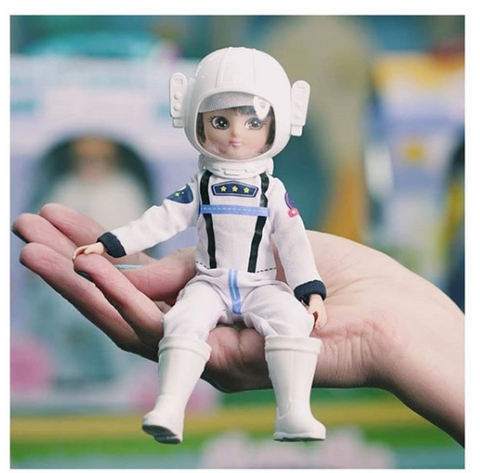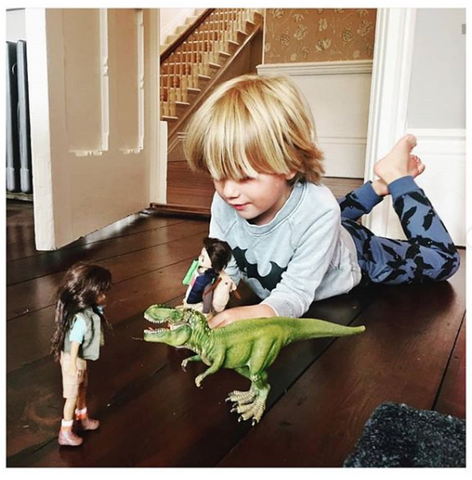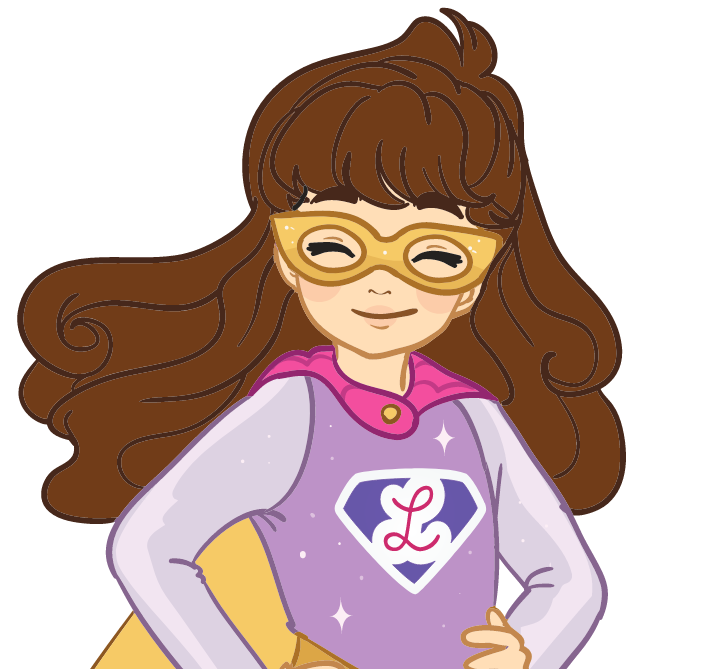Doll Clothes Inspire Today's Kids
Today’s kids are expressive and creative in ways that may have been otherwise repressed just a decade ago.
Kids today have the ability to:
- Feel freer
- Happier
- Identify with who they really are and love themselves wholly. It’s a rewarding sight and we want to foster that love for themselves.
How do we do this?
Through our doll clothes and accessories for these dolls, of course!
Doll dress up and accessorizing are part of pretend play scenarios and help to develop many aspects of a child’s development.

“Pretend play allows the expression of both positive and negative feelings, and the modulation of affect, the ability to integrate emotion with cognition” (Kaufman, 2012).
We want to inspire kids of both genders to embrace pretend doll play and dress their dolls up just like themselves, building self-confidence and creative expression.
Children everywhere want to be understood and acknowledged for their unique thoughts and individuality. To encourage this, we make doll clothes, accessories, and doll clothing patterns that are as unique as the children that play with them!
Children see the ballerinas, astronauts, horseback riders, swimmers, soccer players, and similar and quickly begin to identify with their dolls.
After all, they enjoy looking at a toy that resembles themselves and their favorite activities.

Photo credit: @twogirlsplusdad
Pretend play with their beloved dolls helps them carry out situations with real-life emotions and events that they may not otherwise outright discuss with a parent or caregiver, which is great for emotional regulation.
Unique doll clothes inspire today’s kids to harvest their individuality and grow up believing in themselves!
Here are some other ways doll clothing and accessories help children through:
Imagination
Presenting children with doll clothes that are made from real-life inspires children to use their imaginations and think creatively in pretend play.
- They can imagine they themselves are the dolls they’ve dressed or make pretend they have a sister if they’re an only child.
- The possibilities are endless but with clothes that are outside the realm of a typical doll dress or pair of shorts, kids can take that added step in their play.

Photo credit: @kellie_and_pete
Social & Emotional Regulation
- Pretend play with dolls is used frequently in therapy because it gives children an outlet to express emotions that they might not otherwise feel comfortable expressing, even with a loved one.
- Through pretend play with more realistic dolls and clothes, children may feel as though they can “hide” behind these play figures and display their true emotions, whether they are positive or negative.
Self Expression
Perhaps that little boy who is typically given trucks and swords to play with actually expresses himself better with a Finn doll that resembles himself and his love to be outdoors, flying kites.
Having doll clothes and accessories that better match his personality can allow him to be more self-expressive and show this other side to those he loves.
When we allow children to be who they are and accept them no matter our own visions for them, they are given the opportunity to thrive.

Ambition
Doll clothing patterns made from real-life situations and careers inspire children to have a goal for their life.
- Maybe they want to professionally ride horses or become a veterinarian.
- Perhaps they enjoy space and could see themselves as an astronaut in their adult life.
- Pretend play with dolls and their realistic accessories can create a vision for a child’s future that they may otherwise not have known was there.
Check out our line of Lottie and Finn dolls and let your child express themselves through our unique and realistic accessories and clothing! The possibilities for their future and pretend play are endless when they are able to feel free to be who they really are!
References: Kaufman, Scott Barry (2012, March 06). The Need for Pretend Play in Child Development. Retrieved from https://www.psychologytoday.com/us/blog/beautiful-minds/201203/the-need-pretend-play-in-child-development
![]() Fast Shipping*
Fast Shipping*![]() Subscribe to our Newsletter
Subscribe to our Newsletter![]() 🌟 A Walk in the Park Lottie Doll 🌟
🌟 A Walk in the Park Lottie Doll 🌟



















